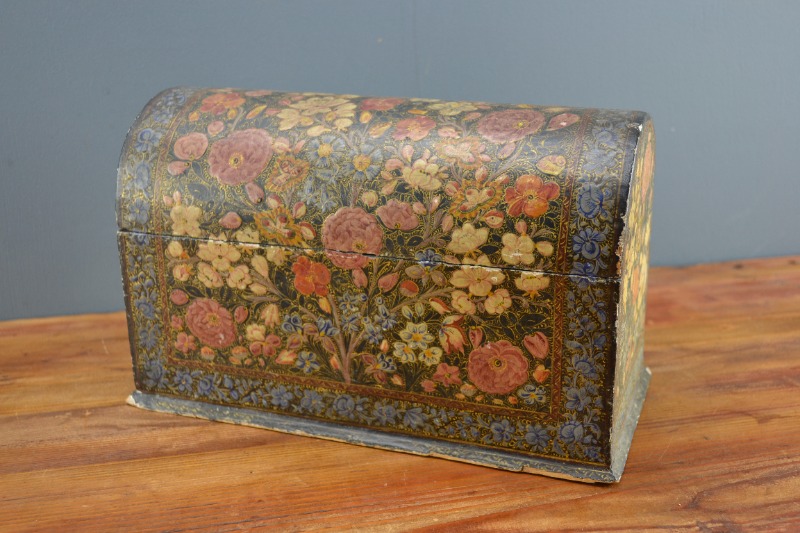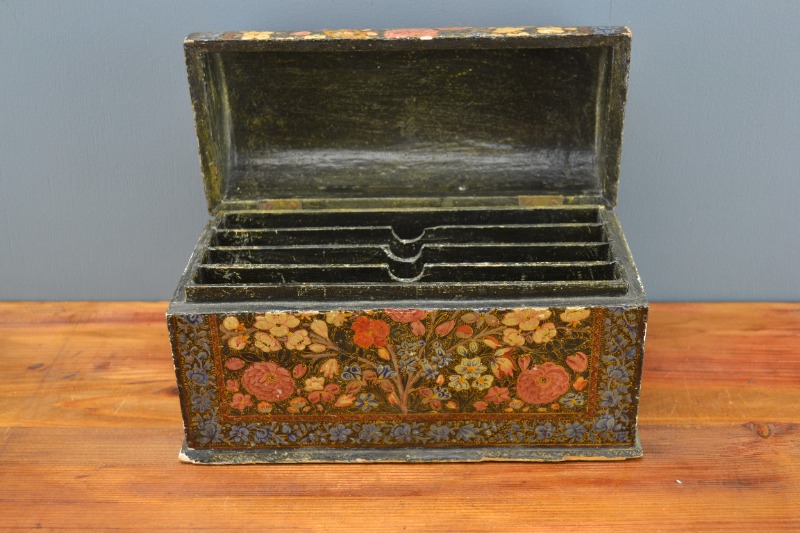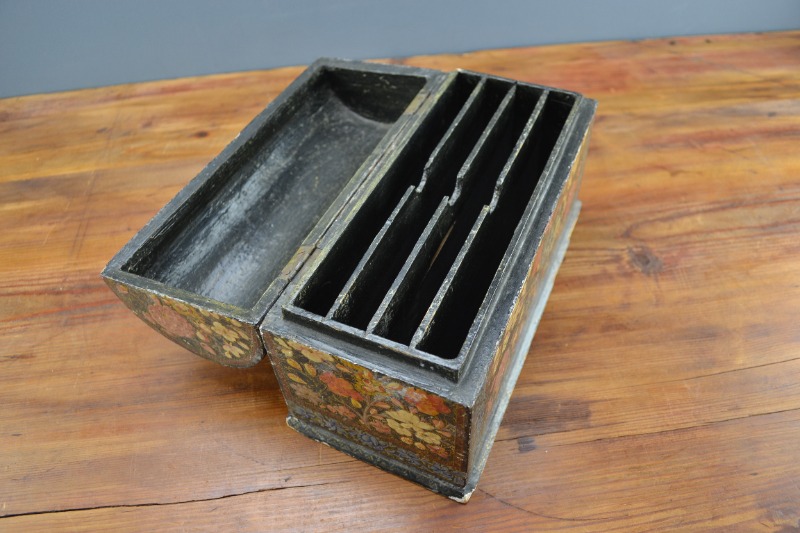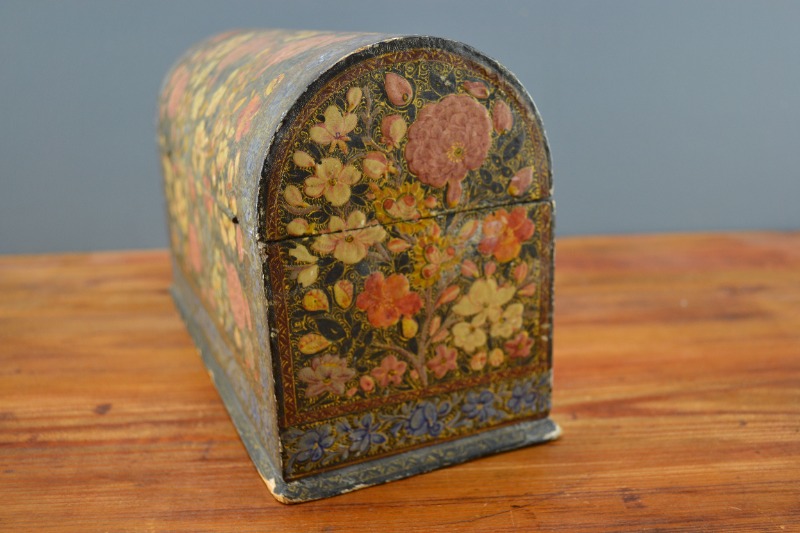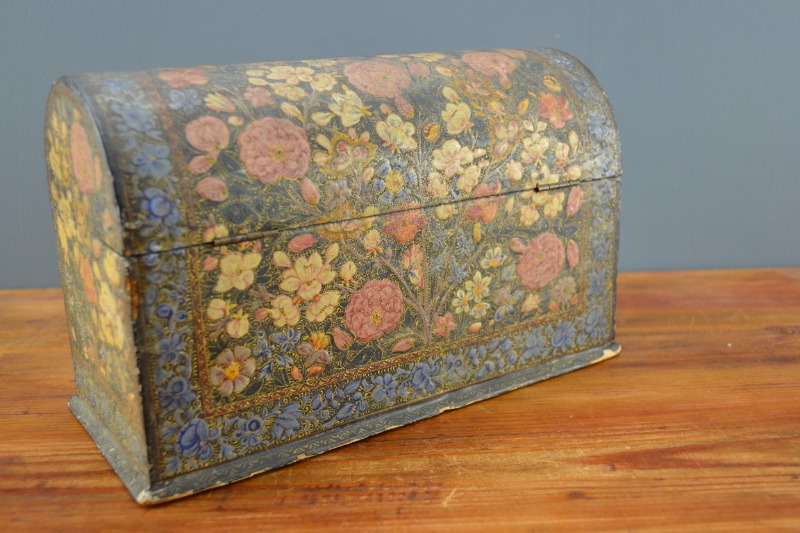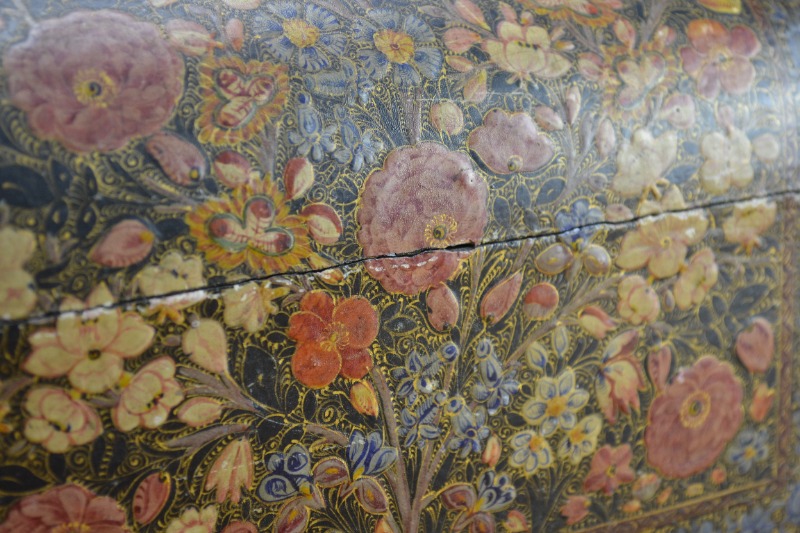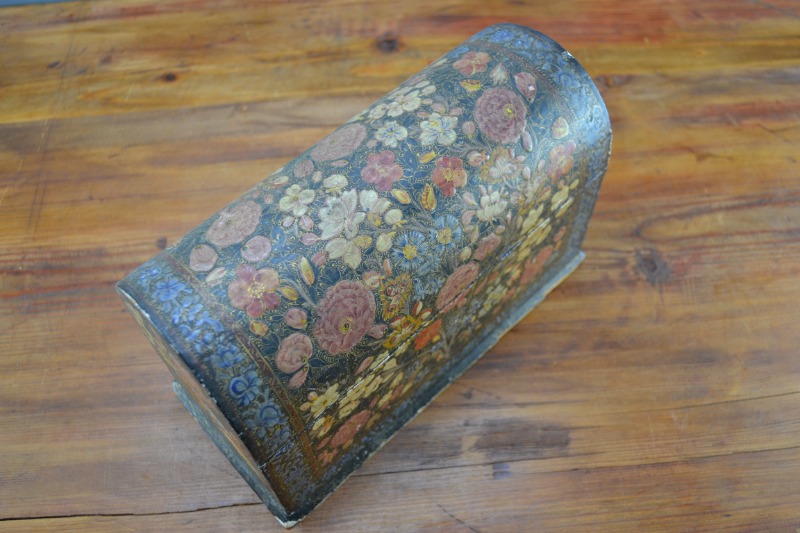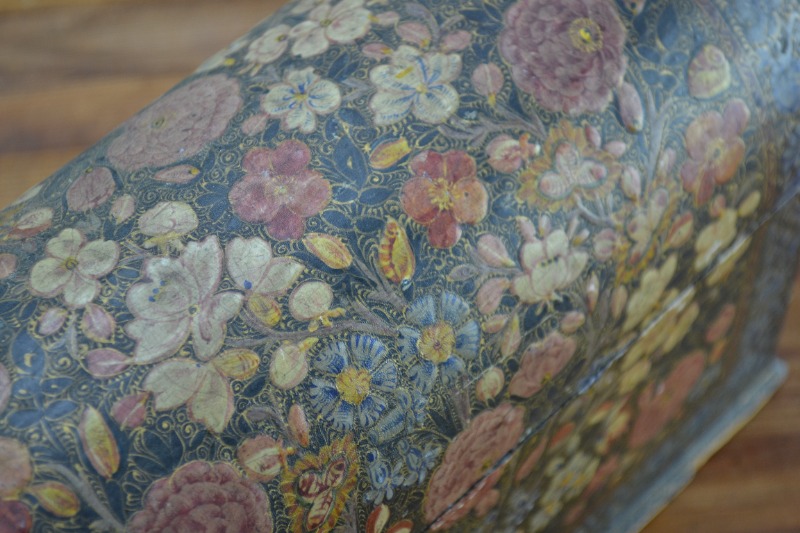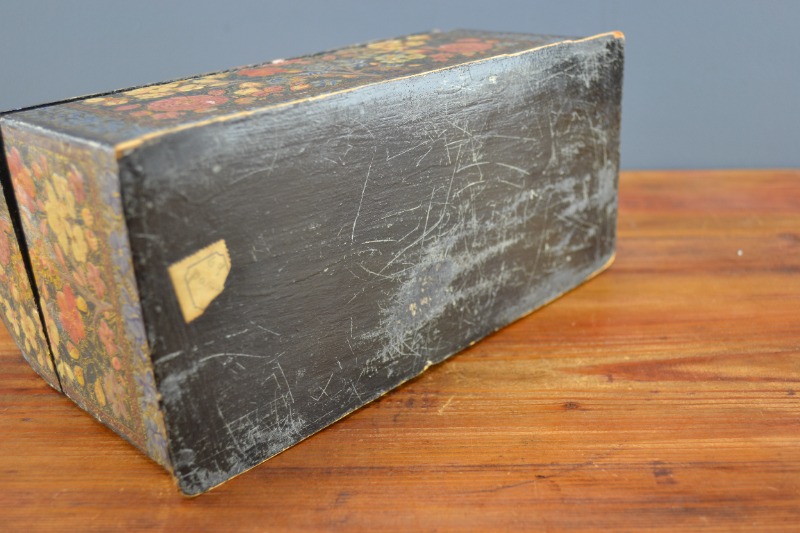Kashmir Hand-Painted Floral Papier Mâché Domed Letter Box, c. 1880
Age:
Circa 1880
Material:
Papier-mâché
Dimensions:
24cm x 11.5cm x 15cm
Shipping:
Standard Parcel
Price:
SOLD
A Kashmiri painted and gilded papier mâché domed box with interior letter compartments. It is richly decorated with finely observed pink, blue and white flowers against a black background with gilt scrolls and edged with a floral blue border.
The box is in very good original condition with very minor losses to edges. The colours remain bright with very little wear to the paint surfaces. Inside, one partition has a crack. Otherwise the interior is in good condition. The box lid closes well with tight hinges.
Papier-mâché was brought to medieval India by Muslim saint Mir Sayyid Ali Hamadani from Persia in the 14th century. The first paper industry developed in Kashmir was established by Sultan Zain-ul-Abedin in 1417-67 AD after he returned from detention in Samarkand and invited craftsmen from Persia and central Asia. The paper became renowned across India and beyond for its quality and an industry grew up around it. The first papier mâché boxes were pen boxes.
The paper pulp was made by pounding waste paper, cloth and other ingredients. It is shaped with the help of moulds. Once dry, it is coated in a white solution consisting of gypsum and glue. After drying, the surface is polished with a wet stone until perfectly smooth. The black pigment was provided by the Kashmir walnut. White lead came from Russia and verdigris was obtained from Surat or Britain. Lapis Lazuli for ultra-marine was bought from Yarkand, China. The painting was done with a brush made from the hair of a Pashmina goat. Sadly, there is no longer a paper industry in Kashmir and the art of papier mâché is in danger of dying out. With new technologies and low pay, many are choosing to leave the profession. This is a wonderful example of centuries of tradition that may not be replicated again.

